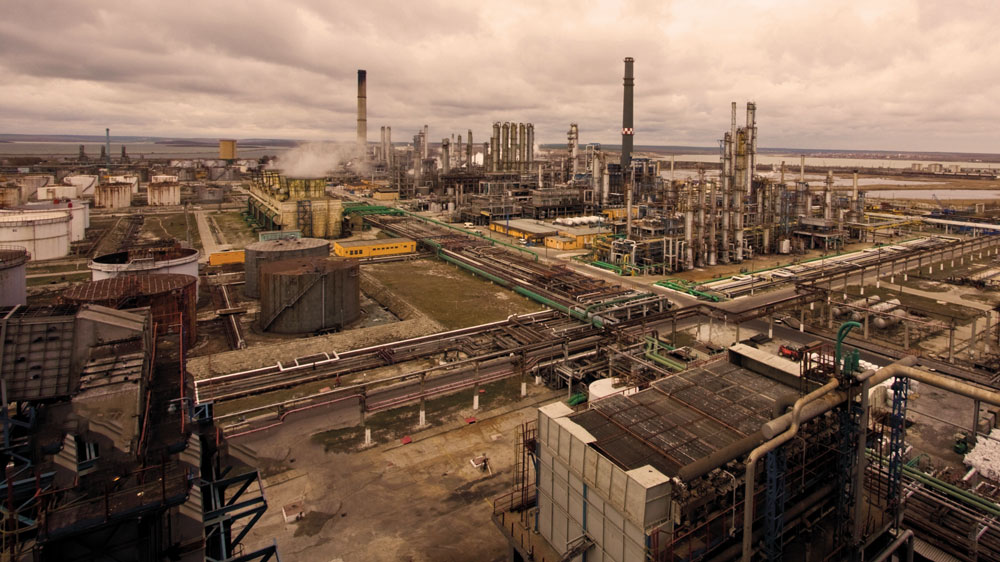Romania’s petrochemical industry comes into sight
Romania’s petrochemical industry is preparing to come out of the shadow cone, benefiting from the programs through which Rompetrol Rafinare and OMV Petrom this year made public their intentions to invest or continue investments in this activity segment. Black Sea gas to be brought to shore, as well as estimates showing that the global market will see an increase in demand for petrochemical products, while fuel demand is expected to drop in the coming years, have determined the two oil companies to rely on this sector.
Rompetrol Rafinare, the only company in Romania operating petrochemical facilities, has announced the restart of the high-density polyethylene (HDPE) plant, on the platform of Petromidia refinery.
“The company aims to restart in the following period the high-density polyethylene plant, stopped for over four years due to high volatility of raw material (ethylene) and finished products’ quotations. For this purpose, the procedures to overhaul and test the plant (verification/upgrade of equipment, approvals etc.) were started in the first quarter of the year,” a press release of Rompetrol Rafinare issued on the occasion of presenting the balance sheet for the first quarter of this year reads.
The HDPE plant, recommissioned
The HDPE plant would be restarted by mid this year, according to company’s estimates. The only petrochemical unit in the country operates at Petromidia, the activity being resumed here in 2014. Together with the HDPE plant, which will be restarted, operating on the refinery’s platform and also the polypropylene plant (PP), which works 100% with raw material produced in the refinery, and the low-density polyethylene plant (LDPE), which works with imported ethylene. In the first quarter of this year, total production of polymers on Petromidia platform stood at around 43,000 tons, by 30% higher than in the similar period of 2017, the increase being determined by the continuous operation of polymers plants this year, as the company states. The turnover of the petrochemical division of Petromidia refinery rose last year, amid a slight increase in production, but it still recorded losses.
Petromidia refinery recorded, in the petrochemical segment, an increase by 6% in the gross turnover in 2017 compared to 2016, to USD 191.3mln, according to company’s financial data. However, the sector recorded losses, which deepened in 2017, going up 15% compared to the level of the previous year, to USD 13mln.
Total sales of petrochemical products increased slightly, by 1%, to 191 million tons, half of the products going in the country and half being exported. Total production of polymers amounted to 147,000 tons in 2017, declining by 1.77% compared to the previous year, when 150,000 tons were produced. However, Rompetrol claims it will continue to invest in the petrochemical sector. Thus, no less than 12% of investments scheduled for this year, of USD 57mln, will go to the petrochemical division in Midia.
The petrochemical division has three plants: the polypropylene plant (PP) and two polyethylene plants, low density polyethylene (LDPE) and high-density polyethylene (HDPE). The three facilities have a total capacity of over 220,000 tons/year. Being in conservation for several years, due to the lack of raw material, the petrochemical sector of Petromidia refinery was restarted in 2006, investments of EUR 100mln being undertaken at the time, to be made by 2017.
Upgrade at Petrobrazi refinery
OMV Petrom has also announced that it was exploring the possibility to develop petrochemical activities at Petrobrazi refinery, by building a petrochemical plant, according to the strategy of Austria’s OMV for the period 2018-2025. In order to achieve this goal, the refinery will undergo an upgrade process.
Production capacity in the petrochemical sector held by OMV Group increased from 1.8 million tons in 2005 to 2.5 million tons in 2017 and will grow even further, to 2.8 million tons, towards 2025. The biggest growth could come from the petrochemical products with high added value – butadiene and aromatic products, while ethylene production would remain at the same level.
According to estimates of OMV management, during 2016-2030, fuel demand will decrease in Europe by 60 million tons, but the demand for petrochemical products will increase by 20 million tons. And Europe means very little compared to the rest of the world: the biggest demand will come from Asia, where the additional 210 million tons of petrochemical products account for 90% of the global increase in demand for this product.
The strategy of the Austrian group, which provides for the development of the petrochemical sector, comes in the context in which OMV Petrom and ExxonMobil are expected to start gas production in the Black Sea, and in view of BRUA gas pipeline construction, which would allow the processing of this gas including in OMV’s refinery in Schewchat, in Austria. OMV Group mentions in its 2025 strategy a significant and long-term gas production from the Neptun Block, in the Black Sea, although the final investment decision for this block will be made only in the second half of this year. The group’s strategy indicates a strong focus on petrochemical products, which bring a higher added value. In total, investments in refining will reach EUR 1bn during 2018-2025 and part of the amount will be used to increase the production of petrochemical products.







